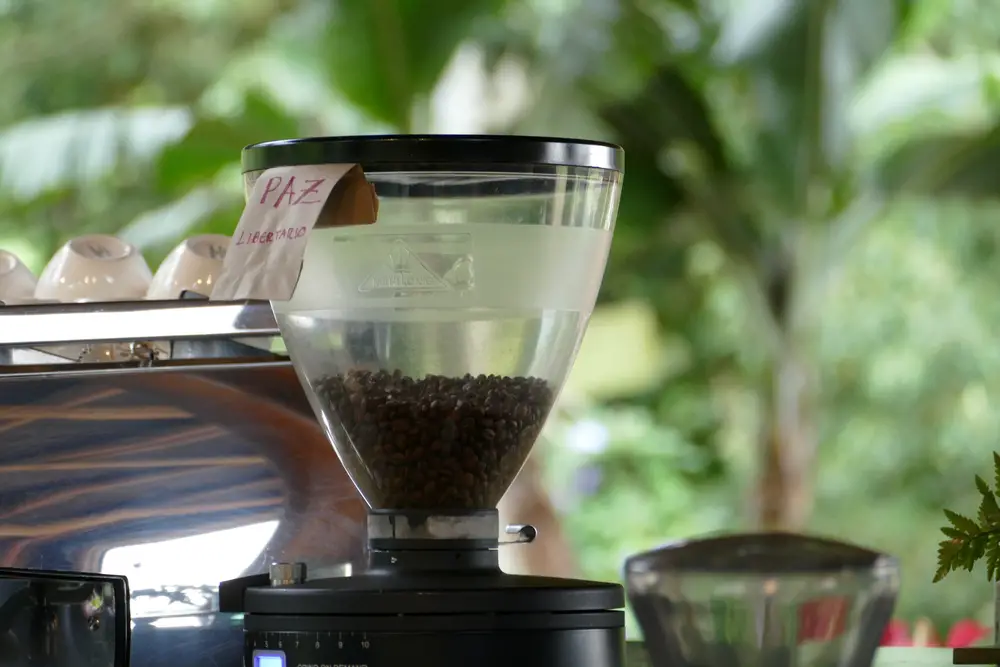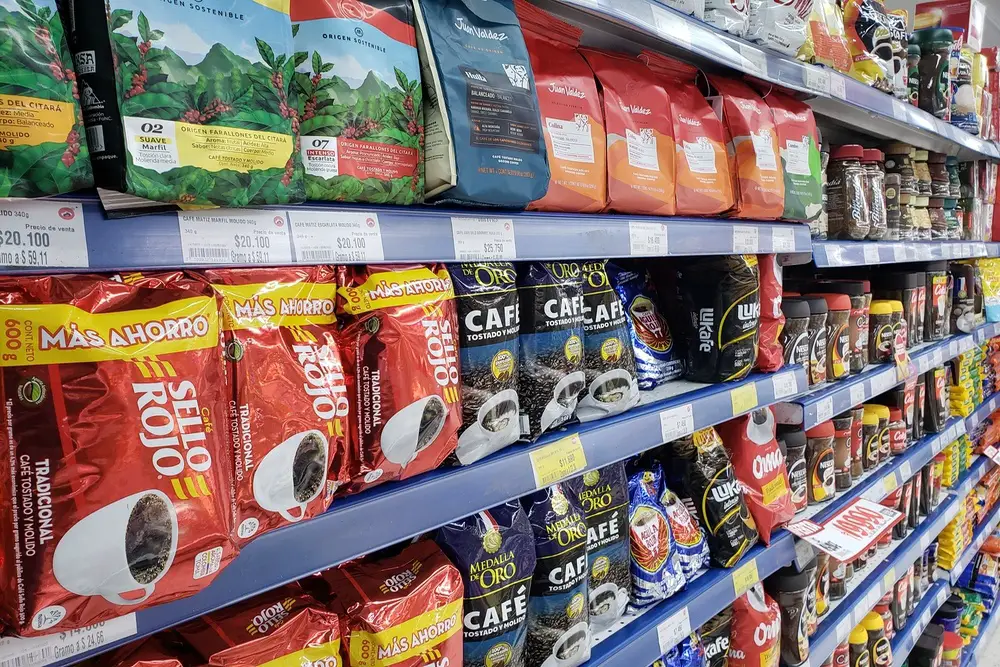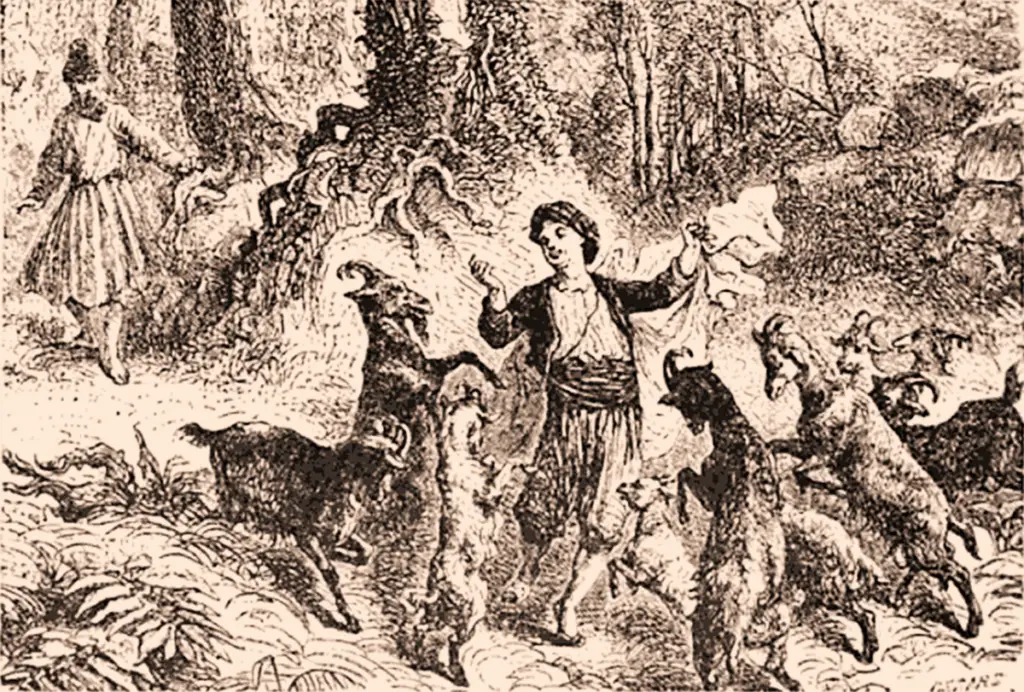If you usually search for recipes on how to make the best coffee, you will have noticed that it is almost always recommended to grind the coffee at home.
There are different coffee grinds that directly affect the final taste of the drink.
Table of Contents
What is grinding and why is it important?
Coffee grinding is a process in which the coffee beans are ground to various degrees – fine, medium or coarse – in preparation for extraction.
Regardless of how the coffee is prepared, according to British celebrity chef Gordon Ramsey, the most important thing is the extraction of the coffee powder.
Because the finer the beans are ground, the larger the surface area, which leads to faster extraction, according to the expert.
For this reason, the coffee for espresso machines is ground very finely, since the water in the machine flows very quickly through the ground coffee under high pressure.
Therefore, if the coffee is finely ground, the water is more likely to permeate the entire surface of the coffee.
For cold brewing, on the other hand, a coarse grind is recommended, as the extraction can settle with the water for several hours.
Why should you grind your own coffee?
The number one reason to grind coffee at home is for durability. Whole beans have a longer shelf life than ground coffee.
Whole roasted beans contain carbon dioxide (CO2) which prevents oxidation and stagnation.
However, once they’re ground, more of the surface area of the beans is exposed to oxygen, resulting in a loss of flavor.
Ground coffee therefore only stays fresh for a few days. So, if you want to buy pre-ground coffee, you should buy it in small batches.
The size of the grind affects the taste of the coffee
Choosing the right grind size can be a bit tricky at first.
Properly grinding coffee makes a big difference, however.
When the coffee comes into contact with water, different flavors develop at different times.
First the acidic aromas appear, then the bitter and finally the sweet notes.
The type of coffee preparation and thus the time in which the water comes into contact with the ground coffee determines the degree of grinding that you need.
Coarse grind
So, if you want to make immersion coffee with a French Press, you should use a coarse grind because the water comes in contact with the coffee for about 4 minutes.
This is a considerable amount of time, so the extraction is slow.
Finely ground
In contrast, when it comes to coffee for an espresso, you need to consider the following:
If you use an espresso coffee with a grind that is too fine, the small particles will be extracted too much, making the finished drink taste too bitter.
If you have an espresso machine where the water comes into contact with the coffee for a very short time (about 30 seconds or less), you need a very finely ground coffee to taste good.
If the grind is too coarse, the water will settle out, reducing extraction and giving the coffee a predominantly sour taste that is not pleasant.
Which coffee grinder should I choose?
Now that you know how important coffee grinding is, let’s take a look at what types of grinders there are and what the pros and cons of each are.
Impact grinder
The knife grinder is the most common and cheapest grinder on the market.
It grinds the coffee beans with a blade, similar to a food processor.
The main problem with this type of grinder is that it grinds the coffee unevenly.
Therefore, it is very likely that you will end up with both large and small particles at the same grind, giving you an inconsistent cup of coffee.
So, keep in mind that it can be difficult to get the same results every day with an impact grinder.
In addition, the friction of the blades on the coffee generates heat, which can affect the taste of the beans.
Mill with disc grinder
This type of grinder uses metal disks called “grinders” that crush and then grind the coffee beans.
The good thing about these grinders is that they produce a more even consistency as the distance between the discs determines the size of the protruding particles.
There are several variants of this type of mill:
- The manual mill, which is similar in shape to a hand-operated pepper mill.
- The electric grinder with flat discs, very common in the professional sector and intended for domestic use in its less powerful version.
There are two main types of electric mills: the cone mills and the flat head mills.
Cone grinder
The cone grinder is the most popular coffee grinder, but if you have the means, it is also suitable for home use.
It is powered by a low-speed motor that prevents the device from heating up.
In addition, the conical discs grind the coffee perfectly.
Another important benefit of this type of grinder is that it allows greater control over grind levels, from coarse to Turkish ground coffee (the finest grind).
However, their main problem is the price, because they are more expensive, but the results they achieve justify the investment.
Flat grinder
This mill works in a similar way to the cone mill in general, but has a more powerful motor and is therefore more likely to be used in industrial settings, which is why its price is higher.
Manual coffee grinders
This is the cheapest option if you want to be sure that you can grind your coffee without electricity.
In general, it is a very good device that allows you to obtain a fairly precise degree of grinding.
Also, since there is no motor, there is no risk of the blades overheating, and with it the coffee.
However, the disadvantage of this type of grinder is that it takes a lot of work to grind a small amount of coffee.
However, if you want to train your upper limbs, this grinder is for you because the coffee beans are hard and tough.
Disclaimer
While it is not necessary to purchase a grinder for industrial or professional use, you should consider several variables to determine which grinder you need.
For example, consider how many times a day you brew coffee.
Well, if you’re someone who only brews coffee in the morning and either doesn’t drink it for the rest of the day or buys it ready-made, you don’t necessarily need to buy a coffee grinder.
Perhaps for the sake of time and convenience, you should buy a knife grinder because it’s economical and fast.
However, if you have a real passion for coffee and brew it multiple times, a cone grinder might be for you.
On the other hand, there are people who prefer to grind their coffee by hand, claiming that the manual method is the most effective (if not efficient).
Types of grinding
The grind size is the desired size in which the coffee is ground, be it coarse like grains of sand or fine like ground coffee.
The different grinding degrees are described below so that you can take them into account when preparing your coffee.
Coarse grind
This is the grind level where the bean chunks are the largest.
To give you an idea of the size of the ground beans, think of breadcrumbs.
This degree of grinding is best suited when you want a slow extraction of the coffee, ie when you are preparing the coffee and you want the water to stay in contact with the coffee grounds for a longer period of time.
Medium grind
The size of this degree of grinding corresponds to that of sugar grains. This grind is most commonly used for pre-ground coffee.
In addition, the medium grind is ideal for preparing coffee in drip systems, as the water must remain in contact for a few seconds.
Fine grind
This is the classic espresso grind, which is perfect for machines but can also be used in the machine:
- Electric coffee machines.
- Drip coffee machines.
- Preparation of filtered coffee.
When preparing immersion coffee, on the other hand, it is not recommended to use the fine grind, as the ground coffee leaves a lot of deposits in the cup.
Extra fine grind
This grind is characterized by the fact that the coffee is (literally) ground into a powder. The consistency is practically the same as that of wheat flour.
This grind is also known as the Turkish grind because it is used to prepare Turkish coffee, which is boiled and then boiled for a few minutes to release the full aroma.
Lest you forget
In the table below, you will find a small overview of what ground coffee is and how you should use it depending on the method of preparation.
Avoid these mistakes and you’ll be grinding coffee like a pro
In itself, the grinding process is not complicated, especially if you already own an electric coffee grinder.
However, there are a few factors to consider if you want to get the most out of your ground coffee.
Choose quality beans
When coffee beans are over-roasted, they turn a dark, shiny color.
The result is a drink with a strong, bitter taste.
Medium roasted beans, on the other hand, have a mild taste and light color.
So, unless you have good quality coffee, grinding it will not change the bad taste of the drink.
Don’t grind the coffee too early
Some baristas say it’s best to wait until the water is ready to grind the coffee.
This way the coffee is freshly ground and the oils are better exposed at the time of extraction, giving you the best in-cup flavor.
Pay attention to the exact amount of coffee you will use
If you don’t measure accurately, you run the risk of wasting coffee.
So, determine your daily consumption so that you only grind as much coffee as you need.
This may be tedious at first, but over time you will see that you are saving coffee while also making the grinding process more efficient.
Pay attention to the amount of water used
The amount of water you use when brewing your coffee is very important to the end result because if you use too much water the drink will taste weak.
However, using too little water can affect the extraction time, making the coffee taste sour.
To avoid either of these two scenarios, use 2 heaping tablespoons of ground coffee for every cup you brew.
This will give you a guide against which to measure the ratio that best suits your taste.
In summary
Grinding the coffee is an important step in the brewing process as it affects the extraction of the aromas.
However, to get a great tasting drink, you need to make sure the beans are of good quality and roasted in the right balance.
While it’s possible to buy pre-ground coffee, if you’re a true coffee lover, you’ll enjoy the smell of freshly ground beans almost as much as the drink they produce.



